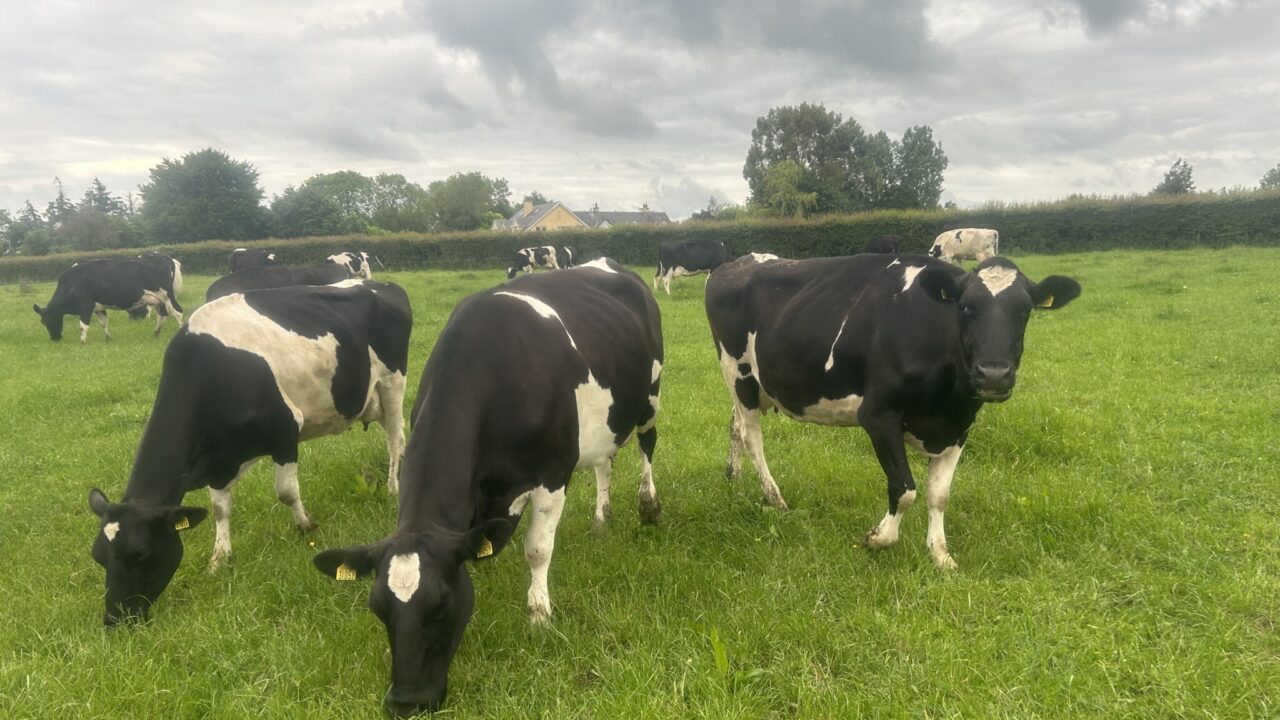Agriculture in Northern Ireland continues to deliver strong levels of economic performance, but a number of strategic challenges remain, according to a financial adviser.
Ulster Bank’s head of agriculture, Cormac McKervey. has confirmed to Agriland that bank borrowing and deposit levels continue to engender strong confidence in the future of most farming sectors.
McKervey explained: “Total bank borrowing and overdraft facilities attributed to agriculture amounted to £959 million at the end of March this year. This is the lowest that figure has been since the end of 2023.
“Significantly, it remains below the £1 billion threshold.”
The Ulster Bank representative also noted that the ratio of loans to bank deposits is encouraging.
“Meanwhile, bank deposits remain extremely healthy. The figure for the end of March this year totalled £640 million,” McKervey said.
“This is slightly down on the £648 million recorded at the end of December 2024. However, the key ratio of bank borrowings relative to deposits remains extremely encouraging.
“There is currently £2 in deposit for every £3 borrowed across agriculture in Northern Ireland. All of this points to an industry that is in a strong state of financial health.”
Turning to the prospects for the various farming sectors, the Ulster Bank representative confirmed that most can look to the future with a strong degree of confidence.
Farm gate prices
He added: “Farm gate dairy prices remain strong despite the fact that milk volumes have risen by 10% year-on-year over the past couple of months. The milk price to feed ratio also remains very strong, which is further boosting dairy margins.
“Competitive feed prices are also helping to maintain margins within the pig and poultry sectors.
“Adding to the prospects for the poultry meat sector has been the recent decision by Moy Park to increase bird prices.”
Where beef is concerned, Cormac McKervey noted the recent softening in finished cattle returns.
“But prices still remain at historically high levels. And looking ahead, there is the prospect of further declines in beef output coming through the system,” he said.
“Sheep also continues to be a good news story with prices for lambs above those available this time last year.
“Arable is the one sector confronting challenges at the present time. The good news is that winter cereal crops are looking very well at the present time. High yields of grain and straw are predicted.”

However, McKervey said that it unlikely that good yields will compensate for poor prices as “grain markets remain in the doldrums”.
“There is the prospect of a strong harvest in most of the world’s top grain growing regions. A weak dollar is also acting to reduce international cereal prices.”
Coming closer to home a number of strategic issues continue to confront agriculture as a whole in Northern Ireland.
McKervey said: “The threat posed by bovine tuberculosis continues to grow. The number of affected farms is increasing with those businesses under restriction having to cope with multiple challenges.
“The cost of keeping additional livestock numbers can be significant. And then there is the issue of finding additional accommodation to meet this requirement.
“Not being able to sell in a live ring can severely reduce income streams on many farms. It all adds up to additional stress, which can also take its toll within any farm business.”
Industry challenges
According to the Ulster Bank representative, the need to speed up the planning process remains a priority.
“Many farmers want to invest in their businesses by adding to the infrastructure that is already there,” he said.
“But the complexities of the planning process are making this a very slow and burdensome process.”
Where the development of the new Nitrates’ Action Programme (NAP) for Northern Ireland is concerned, McKervey has a very simple message.
“We need to come up with right solution. And if it takes a bit of time: so be it,” he said.
Significantly, land prices in Northern Ireland continue to strengthen.
McKervey said: “Land is the resource that drives production agriculture.
“The tradition of conacre letting in this part of the world is not conducive to the long-term development plans of any farming business.
“So those farmers seeking to secure a future for themselves realise that ownership of the land they need is critical as they look ahead.”

